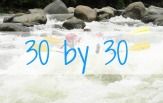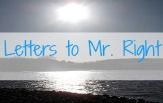Thank you all so much for your sweet comments on
my new chapter! Now, we're back in action with the review of my trip to
Eastern Europe.
I am going to do two posts on Auschwitz. The first (today) more factual, telling you what I saw. The second, more of my opinion and feelings on everything there. Most people who heard that I was going to Auschwitz said that they did not know if they could do it; that it would just be too hard. And it was hard. And eerie. Unbelievably so, really. But I honestly think that this is something that every person should see.
Auschwitz Summary: Beautiful, heartbreaking, eerie, quiet, people just like you and me.
As I stepped off the bus at Auschwitz, I was immediately stricken by how beautiful the camps were located. The middle of rural Poland, with green grass and rolling hills, trees and purple flowers. But inside the fences occurred the worst, most systematic genocide in history. Maybe it was appropriate, this juxtaposition between the beauty of God's creation on the outside, and proof of the horrific way that humans can ruin that within the gates.
When you approach Auschwitz, the first thing you see is the front gate, which holds the message, "Work will set you free." This was only one of the cruel mind games played upon the prisoners by the Nazis. The former buildings and barracks have been turned into museums to remember the 1.2 (plus) million people killed in this place.
There are stark reminders about the lives lost here. Men, women, children. Jews, Christians. Doctors, lawyers, farmers, teachers, professors. Before the camp was opened as a museum, survivors of the camp and family members of the dead were contacted and most supported the opening of the camp in order to show people what happened here. In Poland, all children are required to visit when they turn 14.
 |
| Pond next to the crematorium where ashes remain. |
 |
| Urn holding ashes of those burned in the crematorium. |
Something I did not fully understand is that most of those killed were never prisoners at Auschwitz. Most arrived and were sent directly go the gas chambers to be killed. They were never checked in, never tattooed, never prisoners. Instead, they stepped off of the train with their belongings, after being told they were simply being "relocated", sent to the showers, and killed. This was true for most people who were not deemed able to work, meaning that the children, elderly, and most women were immediately killed upon arrival.
 |
| Photo of people unloading from the train. |
 |
| Children on the train platform. |
Those who did not meet this fate became Auschwitz prisoners. One of the buildings has all of the mug shots lined up on a wall. Most of the prisoners lasted only about 2 months at Auschwitz before they died, either from being shot, starvation, or being worked to death.
In Building 11, known as the Death House, is the cell in which St. Maximillian Kolbe gave his life in order to save another man. When a prisoner at Auschwitz escaped, 10 more were executed. When a man who had a family was selected to be one of the 10, St. Maximillian Kolbe offered to take his place. He was placed, along with the other nine men, into a starvation cell for two weeks. When the door was opened, 9 men were dead. Only the Saint survived. He was then shot and killed. The man whose place he took? He survived Auschwitz. St. Maximillian Kolbe saved his life. Seeing the cell where this happened, and flowers placed next to a statue with his name on it was incredibly moving.
Just outside building 11 is the wall where many prisoners were shot to death by firing squad.
One of the eeriest experiences for me was walking into the only remaining gas chamber. Of the 5 gas chambers, the Nazis destroyed 4 before fleeing the camps. Only one remains. Photos are permitted inside, although speaking is not in order to honor the memory of those killed. I could not bring myself to take photos of such an awful place. You walk into the room where the people were killed. You can see the "showerheads" on the wall, which were there only to make plausible the story that everyone undressed and piled into the room to take a shower. In the next room were giant furnaces where bodies were burned (after all hair being shaved and gold teeth being removed). It was a horrific thing to see and to feel.
 |
| Remaining gas chamber. |
 |
| Destroyed gas chamber. |
After Auschtitz I, we went to Birkenau, the second of the Auschwitz camps. This camp was built larger to house and kill more people. Also striking to me was that the train tracks ran right through the main gate, and ended inside the camp. There was no need for the tracks to continue, because people were not going to be leaving alive.
At Birkenau, they let you tour the barracks, which shows just how horrible the living conditions were for prisoners. Wooden beds, drafty buildings, stables built for animals. It was unbelievable really.
It is hard to fathom the volume of people who were killed here. The numbers for Poland alone are staggering. 1/5 of the Polish population died during World War II. Of the 3,500,000 Jews living in Poland before the war, only 300,000 remained. Most of these were deported to other countreis after the war ended. Today, only 10,000 Jews live in all of Poland.
The museum does an amazing job showing you physical objects to give you an idea of what it means that over 1.2 million people were killed here. One of the worst things that I saw was a room full of human hair. Mounds and mounds of hair that was shaven from the heads of people killed and used to make blankets and uniforms for the Nazis. There were similar rooms filled with other belongings brought by the victims--clothing, dishes, shoes, eye glasses, hair brushes....thousands of these items represent the people whose lives were pointlessly taken by other human beings. I couldn't bring myself to take photographs. Not that I need them. These images are forever etched into my brain.
The people who told me that Auschwitz would be terrible and hard and exhausting were right. It was all of those things. It was also something that changed my perspective on life. If you ever have the chance to go, take it. I firmly believe that this is something everyone should see.




















































